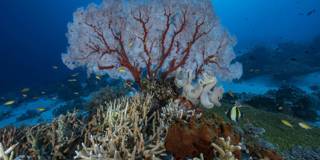Southeast Asia is one of the world’s most biodiverse regions, and it is also highly vulnerable to the effects of climate change. Policymakers in the region must ensure that plans to preserve nature while promoting sustainable economic growth are part of the post-pandemic recovery.
MANILA – The combined effects of COVID-19 and climate change have revealed profound vulnerabilities in Southeast Asia. In the member states of the Association of Southeast Asian Nations (ASEAN), the pandemic turned hospitals into mortuaries at the same time as natural disasters transformed coastal communities into washed-out mud flats. To improve regional resilience and promote sustainable growth, the post-COVID recovery must focus not only on decarbonization, but also on the protection of nature.

MANILA – The combined effects of COVID-19 and climate change have revealed profound vulnerabilities in Southeast Asia. In the member states of the Association of Southeast Asian Nations (ASEAN), the pandemic turned hospitals into mortuaries at the same time as natural disasters transformed coastal communities into washed-out mud flats. To improve regional resilience and promote sustainable growth, the post-COVID recovery must focus not only on decarbonization, but also on the protection of nature.